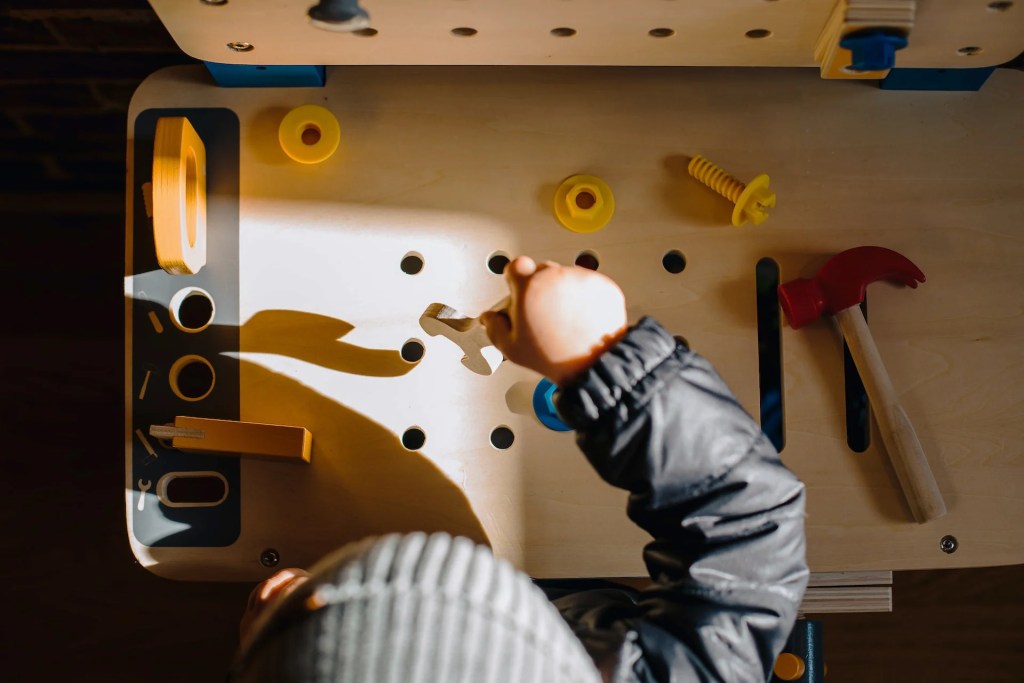One key to successful latching and breastfeeding is skin-to-skin contact. Skin-to-skin immediately after birth can significantly improve your breastfeeding journey. It allows your baby to naturally find their way to the breast, guided by their instinctual sense of smell. It also benefits breastfeeding moms by triggering the release of oxytocin, which aids in post-birth recovery and prevents excessive bleeding.
It is even possible to do skin-to-skin after a C-section. Baby is put directly on your upper abdomen. Then your medical team pushes the baby underneath the drape. You can also do cheek-to-cheek bonding if that is what you are more comfortable with.

The Art of Positioning
Finding the optimal positioning for both you and your baby also encourages latching. Breastfeeding is a unique bond between mother and child, and as you embark on this journey, you may discover specific positions that work best for you and your baby. The cross cradle and football holds are popular positions for newborns, providing excellent support and comfort. However, explore and choose the position that suits you and your baby’s needs.
Cross Cradle Hold:
- Use a nursing pillow to support your arms and baby during the feed.
- Cradle your baby with the arm opposite to the breast you’re nursing from.
- Place your forearm along your baby’s back, supporting their spine.
- Rest your hand on the back of your baby’s neck and shoulders for added support.
- Position your wrist between your baby’s shoulder blades, with your thumb behind one ear and fingers behind the other.
- Cup your breast with your free hand, placing your thumb above the nipple and areola.
- Lightly compress your breast so the nipple points slightly toward your baby’s nose.
- Your baby may latch if they are ready.
Football Hold:
- Position your baby at your side, on the same side you’ll be nursing from.
- Place your baby facing you, with their legs tucked under your arm.
- Support your baby’s head with the same hand, and cup your breast with your free hand.
- Use a nursing pillow for added support and comfort.
Feel free to experiment with these popular positions as well:
- Cradle Position: Similar to the cross cradle hold, but with your baby’s head in the bend of your elbow on the nursing side.
- Laid-Back or Reclining Position: Lean back on a well-supported bed or couch, allowing your baby to rest against you in any direction while maintaining body contact.
- Side-Lying Position: Both you and your baby lie on your sides, ensuring tummy-to-tummy contact.

Signs of a Perfect Latch:
- Baby’s lips should be pursed out, not tucked in
- Observe movement in your baby’s jaw
- Hear or see them swallow
- A pain-free latch is a good latch. Mild discomfort at the beginning is normal, but ongoing pain or discomfort may indicate an issue with the latch.
If you suspect an improper latch, gently break the suction by inserting your finger into the corner of your baby’s mouth and try latching again. Remember that babies can breathe while breastfeeding through their nose.

Breastfeeding Letdown
The letdown reflex involves the release of hormones prolactin and oxytocin, which stimulate milk production and trigger the release of breast milk. Recognize the signs of letdown, such as tingling sensations, leaking, and baby gulping, which may occur during breastfeeding or even when your body anticipates a feeding.

Overcoming Challenges
Breastfeeding parents often face sore, tender, cracked, or bleeding nipples. These issues can often be resolved by addressing the latch. If your baby is not latching properly or you experience pain or clicking noises during feeding, gently break the suction by inserting your finger into the corner of your baby’s mouth and attempt to re-latch.
Remember to get in a comfortable position, compress your areola, stimulate the rooting reflex, and ensure that your baby’s mouth covers the nipple and areola while their chin and nose touch your breast.

Troubleshooting:
Various factors can hinder a baby’s ability to latch properly. Some common reasons include:
- Fussiness
- Sleepiness during feedings
- Large nipples
- Flat or inverted nipples
- Engorgement
- Oversupply
- Premature birth
- Tongue tie
- Cleft lip
- Down Syndrome
Seeking guidance from a lactation consultant can be helpful. They can provide personalized support, suggest techniques like nipple shields or pre-feeding pumping, and help establish a successful latch for both you and your baby.












